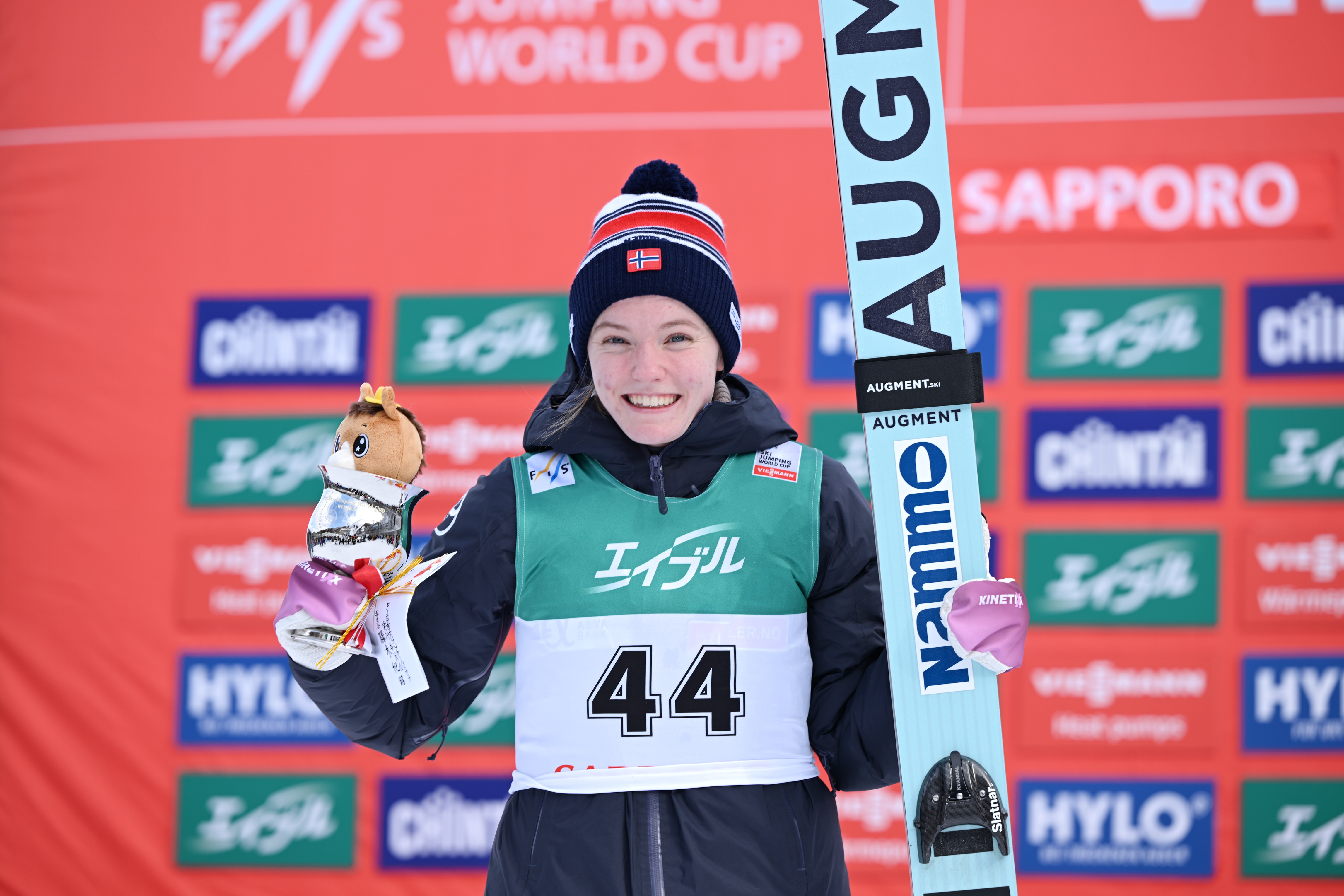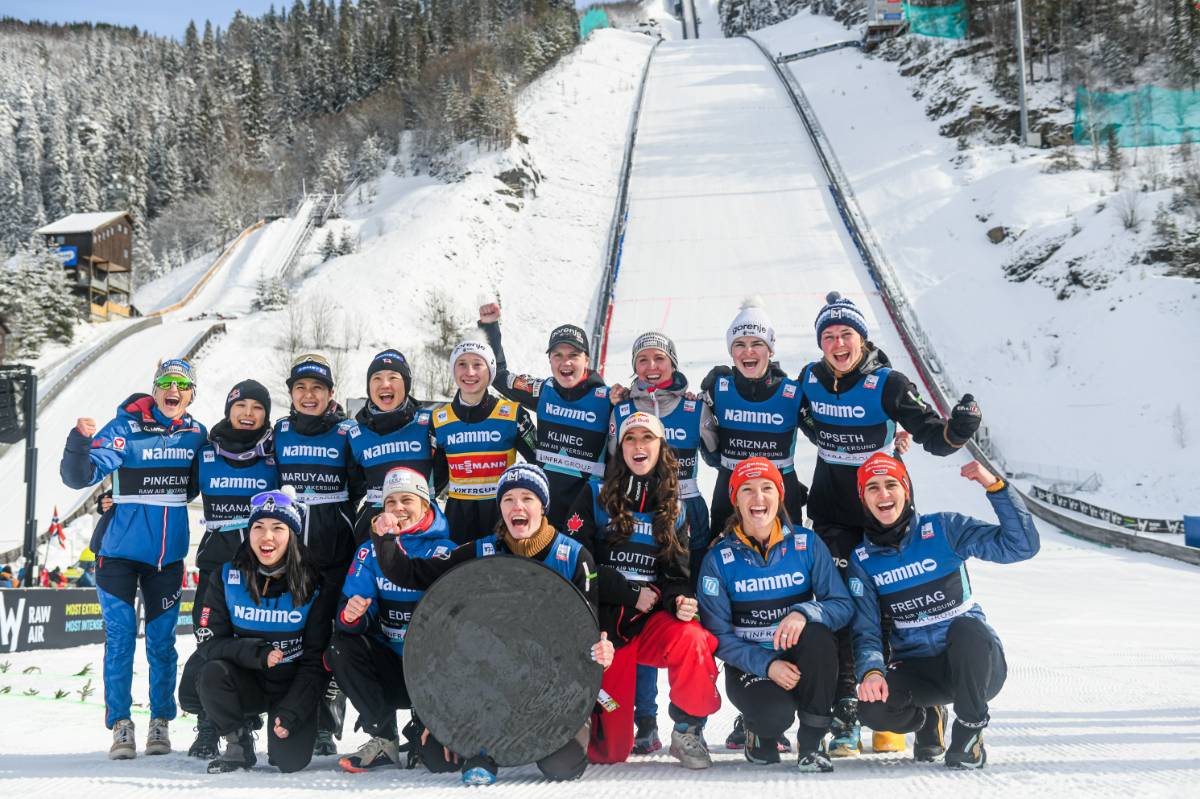A First for Women’s Jumping, Only a Little Late
Originally published in Adirondack Daily Enterprise on February 08, 2025
LAKE PLACID — When Lake Placid hosted the 1980 Winter Olympic Games, it would still be another 30 years before women were offered the opportunity to compete at the highest international level. This weekend, the state Olympic Regional Development Authority is hosting the first women’s ski jumping World Cup in North America.
This historic moment is the product of generations of trailblazing women, even as Lake Placid plays a vital role in developing the next generation of jumpers.
Adalina Weibrecht and Willow Howe are two of the girls in the U10 age group of the New York Ski Educational Foundation’s youth ski jumping program. They start out their practice by stretching and jumping over a series of hurdles, practicing their launching position by squatting low with their hands by their sides. Then they suit up and lug their skis to the two small hills.
After a few runs on the 20-meter hill, one of their coaches, Jay Rand, asks if they want to do a jump or two off the next size hill — the 48-meter.
“Is that even a question?” Adalina, who is the daughter of local Olympian Andrew Weibrecht and also Rand’s granddaughter, responds. “Yes!”
The kids’ other coach, Larry Stone, is a longtime feature of the ski jumping community, having coached the U.S. ski team at numerous points in his career. He is also one of the reasons competitive women’s ski jumping exists today. For Stone, this week has been gratifying, though it was a long time coming.
“It was a long fight,” Stone said. “There was a lot of resistance.”
Breaking in
Stone recalled how he fell into training women’s ski jumpers in the 1990s. He assembled a team of girls and took them on tours to different ski jumps, organizing informal competitions starting in 1995. His team included his daughter, Molly Stone, and future world champion Lindsey Van.
“I always thought they could do this sport and do it well,” Stone said.
For many years, prevailing myths about the female body and tradition hindered the sport. In 2009, women were finally added to the FIS Nordic World Ski Championships, and in 2011 they joined the world cup circuit. Van, whom Stone affectionately calls his daughter from his coaching days, became the first women’s world champion. Prior to 2009, the informal championships were treated as a sideshow to the men’s events, but that began to change.
Former U.S. ski jumpers Nina Lussi, Tara Geraghty-Moats, Lindsey Van, and Jessica Jerome recently gathered around Eirin Maria Kvandal—the winner of the women’s qualifying competition at a FIS Ski Jumping World Cup event—in a symbolic gesture of support. Kvandal, a Norwegian, received a check from a crowd-sourced fundraiser designed to level the prize pay between male and female qualifiers.
“It was pretty wild,” Van said. “It finally felt like people respected us a little bit more.”
Despite the progress, inequalities persisted. Women were consistently paid less—or not at all—for winning competitions. Jessica Jerome recalled winning prizes that were as modest as a 12-pack of off-brand Coke, while male jumpers received significant cash rewards. The lack of visibility and sponsorship in the U.S. further compounded these disparities.
‘Halfway Between Generations’
Nina Lussi described her early experiences in Lake Placid as quintessentially local—just a fun way to spend the dark winter months of the Adirondacks. But as her skills improved, she had the opportunity to travel and compete internationally, including at the Junior World Championships in 2009 and later at a ski academy in Austria. “I was ready to see the world and pursue my dreams,” Lussi said. “I feel like I was halfway between generations—the generation before me did a lot of the legwork for me to have these opportunities.”
Still Fighting to Be Seen
Veteran athletes and pioneers of women’s ski jumping returned to Lake Placid this weekend in new roles, this time serving as technical delegates for the FIS. They expressed mixed emotions—a combination of pride in the achievements and frustration over the long battle for recognition and fair pay. Former jumper Jessica Jerome remarked on the challenges female athletes face, often leading to talented jumpers quitting the sport.
Members of the U.S. ski jumping team competing locally hope this event creates a lasting impact. At age 22, Paige Jones, a trailblazer with several historical firsts to her name, continues to break barriers. The community is rallying behind the athletes, with recent efforts including a GoFundMe campaign to equalize prize money between male and female qualifiers. The campaign, bolstered by contributions from ORDA, has successfully presented the winning female qualifier with a cash prize on par with that of her male counterparts.
According to ORDA spokesperson Darcy Norfolk, a second initiative led by U.S. Ski & Snowboard, in conjunction with ORDA and USA Ski Jumping, is underway to ensure all athletes receive equal recognition for their achievements at this World Cup event.
“For them to not be able to earn a living as the best in the world at their sport—it’s a real shame,” Lussi said. “This is our way of saying that we believe in you and you deserve more. It’s as pure as that, really.”
See Also
Ski jumping World Cup returns to Lake Placid
February 07, 2025 / Adirondack Daily Enterprise
Ski Jumping: Women Continue to Fight for 'Hill Equality'
November 20, 2024 / Sport1

Two Nights Tour: A Leap Towards Equality for Female Ski Jumpers
January 04, 2024 / L'Équipe

Superb Kvandal jumps to victory on second day in Sapporo
January 15, 2024 / FIS Ski Jumping

Women Set to Compete at 2028 Ski Flying World Championships in Planica
October 03, 2023 / FIS